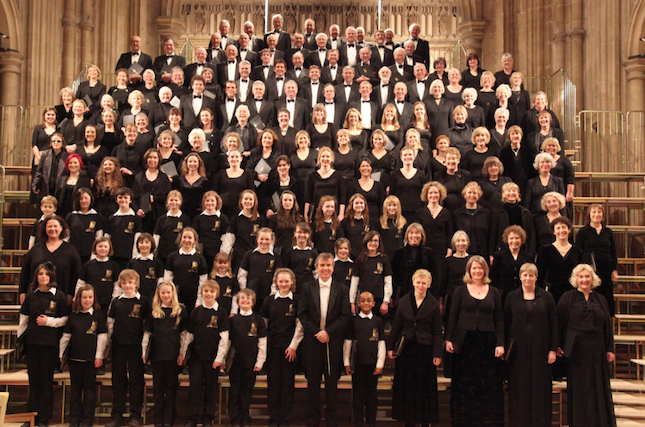
Photo: Canterbury Cathedral
As the University of Kent celebrates its 50th anniversary, the University Chorus and Symphony Orchestra have joined forces with four outstanding internationally-acclaimed soloists to celebrate the occasion with a performance of Verdi’s Requiem.
Saturday 14th of March was an unusually cold and windy evening and I was queuing up to enter the Canterbury Cathedral nave to listen to the University of Kent’s orchestra to play Verdi’s Requiem. There were a good number of people waiting outside, and I overheard the expectant chatter of the people, how they are looking forward for a good concert. A steward was passing alongside the queue asking people to “queue closer”. For this remark an old lady behind me quipped “Sorry we are British and we aren’t used to standing so close to each other”.
A few minutes later we were allowed in. I paid for a copy of concert program and hunted for a good seat from the fast dwindling free spaces at the aisles. Finally I spotted an empty chair next to the tomb of a Victorian archbishop of Canterbury: rather fitting for a requiem mass. I had a view of the string section of the orchestra and its conductor, Susan Wanless, between two pillars. The nave was shortly filled with eager concert goers and there were hardly any empty seats.
After a short introduction and a prayer during which I learned that Rachel Nicholls will be filling in for soprano Giselle Allen – a last minute change – everybody took their places. Then a few notes in the violin was played by the orchestra leader Jeremy Ovenden presumably for the musicians to fine tune their instruments. A hush and a silence fell over the audience. The tenors Gerard Schneider and Simon Thorpe walked in with the sopranos Rachel Nicolls and Carolyn Dobbin. Soon the choir smartly clad in black stirred and turned the libretto page of the first movement.
The music gently flooded the nave like a gentle tide rapidly turning in to a loud plea for mercy from God. The voices of the two tenors pierced the cold air inside the Cathedral followed by the sopranos and the choir, guided along fluently by the orchestra. I turned to see the faces of the audience, they were enraptured. Then came the thunderous second movement, Dies Irae, perhaps the most famous of all movements of Verdi’s Requiem. It’s the movement that stands alone, the movement that makes the listeners shudder. Precisely when the large bass drum thundered and the choir sang loudly of the Judgement Day, I watched how the man sitting in front of me turned and nodded towards his companion sitting next to him with a faint smile.
The second movement beginning from Dies Irae conjured Verdi’s vision of the Christ’s judgement and his immense compassion for an enthralled audience. The choir and the orchestra hit every note perfectly and the following intermission felt like a rude awakening.
The minstrels took to their instruments and the vocalists to their libretto yet again and began with Offertorio, a melancholic pleading to God. The two sopranos and the two tenors were able to lift my spirit even through a melancholic movement such as this, with the expert control of the conductor.
The spirit elevated towards the heaven during the previous movements started its earthward journey from Lux alterna or the eternal light, the penultimate movement. When it was all over the nave of the Cathedral was filled with clamorous applause that did not die out for good several minutes.
